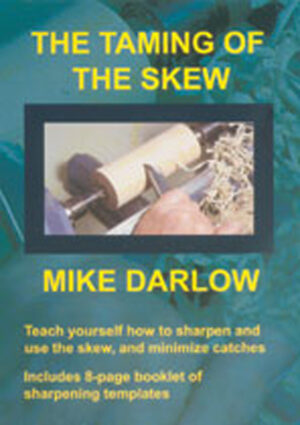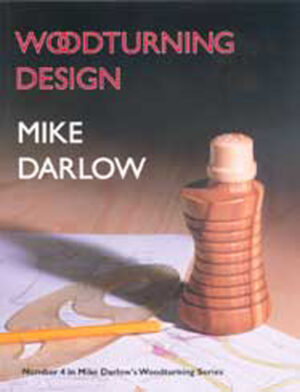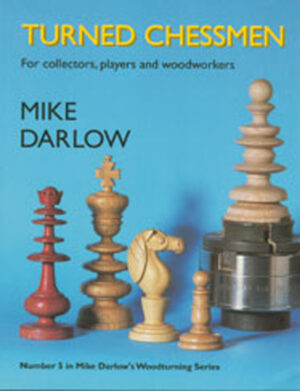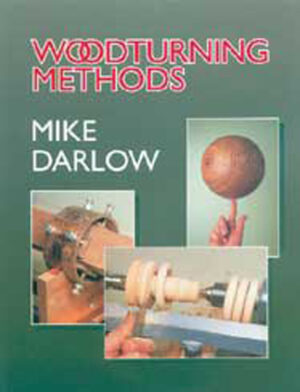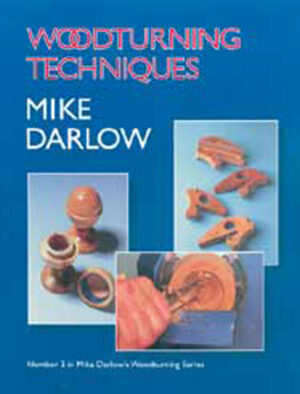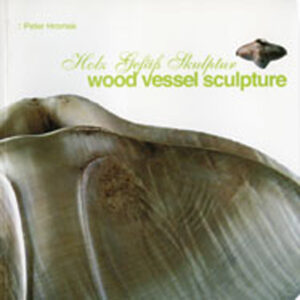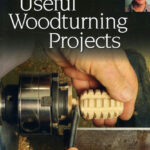USEFUL WOODTURNING PROJECTS
$44.00
by Mike Darlow
Published by Fox Chapel Publishing
ISBN 978-1-4971-0157-9
As reviewed in The Australian Woodworker Issue 216 by Alan Jacobs
In the interest of full disclosure I do know Mike Darlow personally as he is a valued member of the Southern Highlands Woodies Group Inc where his intellectual and practical contributions to the group are much appreciated. I am a member of the same group. This review of his latest book, Useful Woodturning Projects, is my personal opinion.
This new release is the seventh title in Mike Darlow’s book series on woodturning. Some may consider the new book to be a curious mixture of how-to instruction and sometimes arcane information. For example, there is the section dealing with chess sets. It commences with an overview of the origins of these sets and their designers/creators or the men after whom the various designs are named. These include Mathew Flinders, Marcel Duchamp and Man Ray. This information relating to the origins and inspirations for the chess sets creates a context for the designs and adds to the entertainment and education value of Useful Woodturning Projects.
The history of the designs is then supplemented with a how-to section which focusses on newer designs created by Mike. These designs reference the historic originals and promise improvements in such matters as playability and the ease of visual recognition. The new designs offer the opportunity for a reasonably competent woodturner to fashion their own chess sets which are a homage to the originals. Other how-to sections cover objects such as an improved pepper grinder, spinning tops, funnels, a point-presser and clapper and historical objects such as a Negus strainer and a monoaural stethoscope.
Anyone familiar with the first six books in the Darlow series on woodturning will know that the how-to component contains instruction on all aspects such as chucking, turning techniques and jigs to ensure the desired outcome. Step-by-step instructions are supported by clear dimensional drawings and photographs that show the stages in the turning and the resultant product.
Mike claims that these objects are within the reach of the average woodturner and I can verify that he road-tested this claim by demonstrating how they are turned at the local woodturning club. If you rate yourself as somewhat less than average, then attempting one or more of these projects will enhance your knowledge of woodturning techniques and improve your hand skills. It may be of benefit to seek out a little help from a more knowledgeable turner. Access to those who are more competent than yourself is one of the many advantages of joining a dedicated woodturning group or a Men’s Shed.
Whether all or only some of the projects in the book are useful is a moot point that deserves consideration by woodturners as it relates to the fundamental questions – why do we bother to pursue our craft and to what end?
In his Introduction (Chapter 1), Mike delves into matters which underpin the existence of a book that overtly addresses the issue of usefulness. I found the Introduction interesting and it reminded me of banter that I have heard at my local woodturning club or when I have unveiled my latest turned product to my significant other. ‘Not another bowl. What am I supposed to do with it? There are dozens of them cluttering up my cupboards or lying around already!’.
Mike presents his version of why we need to reconsider the role of turning. His contention is that in the last few decades the amount of turning of useful items has declined relative to non-useful items. The upward trajectory of the latter is ascribed to factors such as the rising profile of fine art woodturners and the aspirational motivation that these artistic turners exert on the projects attempted by the average woodturner. The downward trajectory of useful woodturning is explained by factors such as the diminishing need for repetitive turned objects and the consequent lack of learnt skill by amateur woodturners.
He maintains that poor skills are the result of inadequate tuition and lack of practice. He opines that many woodturners attempt to cover these deficiencies by excessive sanding (to which I must plead guilty). The aim of Useful Woodturning Projects is to reverse this downward trend and Mike maintains that these are projects that are just waiting to be attempted by the reader.
So what are useful projects? Mike offers the following definition on the first page: By useful I mean “can be used for other than aesthetic, contemplative or emotion-creating purposes.” A useful turning’s usefulness may be entirely due to the turning, as in a pastry-cook’s rolling pin. At the other extreme the turning may only add three-dimensional ornament to an item which is no less useful without the turning.”
I interpret this definition as stating that an object is useful if it has a utility value or usability. Mike’s definition provides him with a wide canvass with which to justify the inclusion of his nominated projects.
Personally, as I read the book, I tended to position the projects on a spectrum from ‘Very Useful For Me in the Here and Now’ to ‘Not At All Useful’. I suspect that many readers will do what I did and classify the projects according to their own definition of useful. However, and paradoxically, I must admit to enjoying the sections that dealt with some of my Not Useful projects and gained some ideas about how I could improve my turning technique. Likewise, I have not played chess for years, but I really enjoyed the section on chess pieces and their origins.
What I found most useful was the molinillos, an improved pepper grinder and spinning tops. Useful Woodturning Projects is an entertaining and thoughtful offering that will educate and enhance the skills and aspirations of woodturning enthusiasts. Ultimately, the appeal of the various projects in this book is a matter for each prospective purchaser to decide for themselves. I would expect that the average woodturner will find at least a couple of projects in the book to excite their curiosity and encourage them to start their lathe.
Mike’s instructions, drawings and images are clear and cover all the stages in the making of the projects, so it is a very effective how-to book. The contextual information may at times border on the quirky but will certainly entertain anyone interested in the origins and history associated with the projects.
200 pages, colour photographs
Contents
Introduction
The growth in non-useful turning
The relative decline in useful turning
Conclusion
General matters
Endnotes
Small Tools
Parting tools
Skew chisels
Detail gouges
Sharpening, handles and callipers
Endnotes
A Backscratcher
Making Chessmen
Chucking workpieces for leaded chessmen
Boring the leading hole Chucking chessmen workpieces
Polishing
Leading
Leathering
Three Antique Chess Sets
Signatures and symbols
The Rowbothum set
Matthew Flinders’ set
The Windsor design
Endnotes
Five Recent Chess Set Designs
Creating new designs
The Buenos design
The Manny set
The Tang design
The Lopez design
The Stamma design
Endnotes
Bibliography
Frames
Hanging, rabbets and sealing
A faux bamboo frame
A larger bamboo frame
Another fully-turned frame
Split-spindle frames
Quadrant-corner frames
Eared frames
Diptych frames
Frames with Gothic arches
Frames constructed from more than one annulus
Endnotes
Funnels
Funnel design
Making funnels
Endnotes
Markers
Designing markers
Molinillos
The chocolate tree
Early uses of chocolate
Modern processing
Making a molinillo
Endnotes
Monaural Stethoscopes
History of the stethoscope
Making a monaural stethoscope
Endnotes
A Negus Strainer
Colonel Negus
Negus
Making a Negus strainer
Endnotes
An Improved Pepper Grinder
Pepper
Development of the pepper grinder
Pepper-grinder design
Making the grinder
Endnotes
A Point-Presser-and-Clapper
Design
Making
Reel Stands
Antique reel stands
History
Making the reel stand
Endnotes
Spinning Tops
Making the Tops
This Book’s Typefaces
Typefaces and fonts
Using typefaces
Style manuals
Endnotes
Millimetres to Inches
Index

